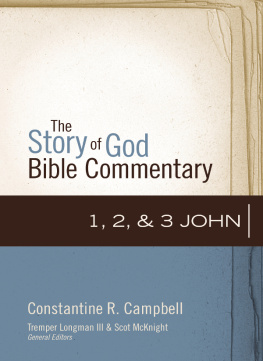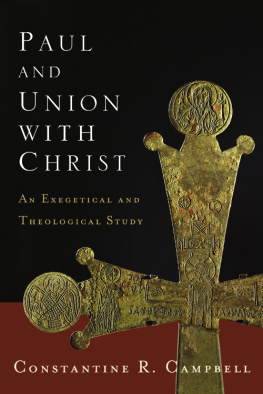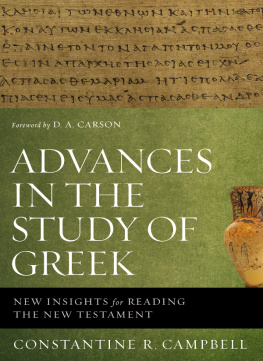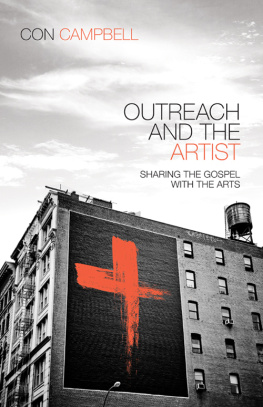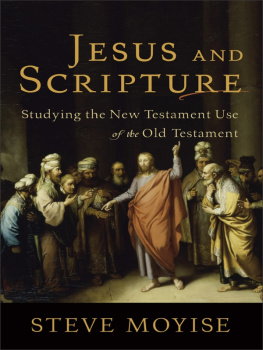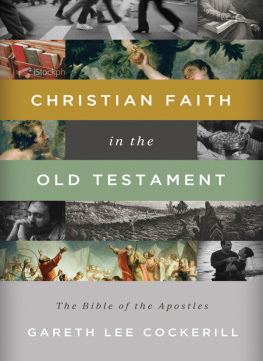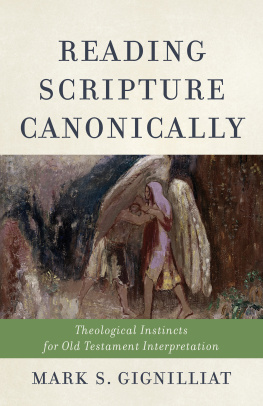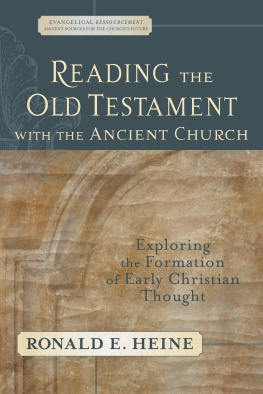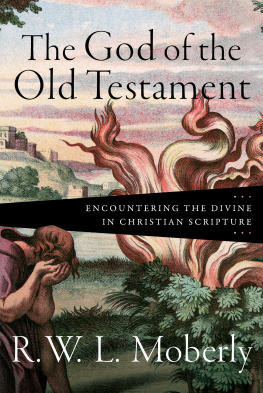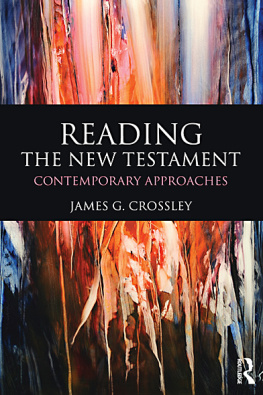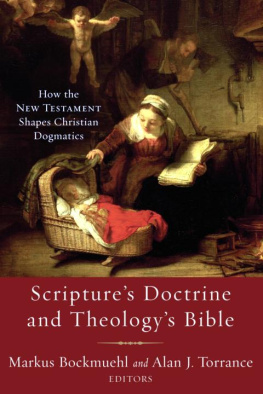Constantine R. Campbell - Reading the New Testament as Christian Scripture
Here you can read online Constantine R. Campbell - Reading the New Testament as Christian Scripture full text of the book (entire story) in english for free. Download pdf and epub, get meaning, cover and reviews about this ebook. year: 2020, publisher: Baker Publishing Group, genre: Religion. Description of the work, (preface) as well as reviews are available. Best literature library LitArk.com created for fans of good reading and offers a wide selection of genres:
Romance novel
Science fiction
Adventure
Detective
Science
History
Home and family
Prose
Art
Politics
Computer
Non-fiction
Religion
Business
Children
Humor
Choose a favorite category and find really read worthwhile books. Enjoy immersion in the world of imagination, feel the emotions of the characters or learn something new for yourself, make an fascinating discovery.
- Book:Reading the New Testament as Christian Scripture
- Author:
- Publisher:Baker Publishing Group
- Genre:
- Year:2020
- Rating:3 / 5
- Favourites:Add to favourites
- Your mark:
- 60
- 1
- 2
- 3
- 4
- 5
Reading the New Testament as Christian Scripture: summary, description and annotation
We offer to read an annotation, description, summary or preface (depends on what the author of the book "Reading the New Testament as Christian Scripture" wrote himself). If you haven't found the necessary information about the book — write in the comments, we will try to find it.
Constantine R. Campbell: author's other books
Who wrote Reading the New Testament as Christian Scripture? Find out the surname, the name of the author of the book and a list of all author's works by series.
Reading the New Testament as Christian Scripture — read online for free the complete book (whole text) full work
Below is the text of the book, divided by pages. System saving the place of the last page read, allows you to conveniently read the book "Reading the New Testament as Christian Scripture" online for free, without having to search again every time where you left off. Put a bookmark, and you can go to the page where you finished reading at any time.
Font size:
Interval:
Bookmark:
The genre of New Testament introduction has been remarkably stable for some time and, because of the influence of traditional historical criticism, often focuses on the historical origins of the texta kind of textual archaeology. While Campbell and Pennington are well aware of the value of introducing the origins of the New Testament texts, their work intentionally focuses on reading the New Testament as Christian Scripture . That is, they introduce modern readers to the subject matter to which the New Testament testifiesnamely, the ultimate revelation of God in Jesus Christ. Campbell and Pennington address student-disciples on their journey of transformation by means of the canonical text of the New Testament. Student-disciples and professor-pastors should take up this introduction with confidence, because it not only gives instruction on what the New Testament is, but more, it illuminates what God does in and through the witness of the New Testament in the lives of faithful readers. Highly recommended.
Darian Lockett , Talbot School of Theology, Biola University
Campbell and Pennington have gifted both the church and the academy with a text that deftly combines the literary, canonical, and theological sensibilities required to understand the New Testaments message both in its own context and in our world today. I cannot wait to introduce this valuable resource to students.
Brandon D. Smith , Cedarville University
Eminently navigable and aesthetically pleasing, Reading the New Testament as Christian Scripture draws students into the central truths of the Christian faith. Campbell and Pennington come from a particular perspective on debatable topics, and so teachers will want to supplement to provide their students the full range of Christian perspectives, but in every instance the authors discuss such topics with clarity and grace. Therefore, I would be thrilled to offer this text to my New Testament students, both to include perspectives different from my own and, even more importantly, to show the even greater unity among scholars who consider the New Testament as Scripture.
Amy Peeler , Wheaton College
The challenges facing anyone seeking to introduce the literature and message of the New Testament to this generation are many. Constantine Campbell and Jonathan Pennington have successfully responded to them with this remarkably useful and effective survey, rooted in their exhortation to read the biblical revelation as disciples expecting transformation. Color-coded sidebars punctuate each section, inviting students to consider intriguing insights, questions, and observations. Each chapter ends with Christian Reading Questions that summon further reflection, often in relation to other portions of Scripture or pieces of art inspired by Christian theology. The book is littered with full-color maps, diagrams, tables, and photographs and concludes with a glossary of key terms highlighted throughout.
Jonathan Lunde , Biola University
For far too long students have been introduced to thoughtful engagement with the Bible through what is essentially an introduction to the discipline of biblical studies. I find that these introductions do a better job of training people to be professional biblical scholars than they do of helping them attend to the subject at handnamely, God. This book is a welcome change. The book also helpfully attends to the fact that technology has radically changed the way students engage with the Bible (and all texts for that matter)it is a thing to be searched with a search engine, mined for answers, but not to be read in the purest sense of that word (as a transformative act). The introductory chapter alone is worth the purchase!
Kelly D. Liebengood , LeTourneau University
The authors focus on the New Testament books as Christian Scripture shines through on page after page, expressed in their engaging and lucid writing. The Implementation section and discussion questions for each New Testament book are excellent features, helping Christian readers reflect on how they engage with Scripture today. The sidebars on more detailed points are a mine of useful information, and the chapters are well illustrated with maps, art, and architecture.
Steve Walton , Trinity College, Bristol

VOLUMES AVAILABLE
____
Reading the New Testament as Christian Scripture
Constantine R. Campbell and Jonathan T. Pennington
____
2020 by Constantine R. Campbell and Jonathan T. Pennington
Published by Baker Academic
a division of Baker Publishing Group
PO Box 6287, Grand Rapids, MI 49516-6287
www.bakeracademic.com
Ebook edition created 2020
All rights reserved. No part of this publication may be reproduced, stored in a retrieval system, or transmitted in any form or by any meansfor example, electronic, photocopy, recordingwithout the prior written permission of the publisher. The only exception is brief quotations in printed reviews.
Library of Congress Cataloging-in-Publication Data is on file at the Library of Congress, Washington, DC.
ISBN 978-1-4934-2735-2
Unless otherwise noted, Scripture quotations have been taken from the Christian Standard Bible, copyright 2017 by Holman Bible Publishers. Used by permission. Christian Standard Bible and CSB are federally registered trademarks of Holman Bible Publishers.
Scripture quotations labeled ESV are from The Holy Bible, English Standard Version (ESV), copyright 2001 by Crossway, a publishing ministry of Good News Publishers. Used by permission. All rights reserved. ESV Text Edition: 2016
Scripture quotations labeled NIV are from THE HOLY BIBLE, NEW INTERNATIONAL VERSION, NIV Copyright 1973, 1978, 1984, 2011 by Biblica, Inc. Used by permission. All rights reserved worldwide.
Interior design by Brian Brunsting
Cover
Endorsements
Half Title Page
Series Page
Title Page
Copyright Page
Acknowledgments
Abbreviations
1. The New Testament as Christian Scripture
2. The New Testament as a Book
3. The World around the New Testament
4. Jesuss Life and Teaching
5. The Fourfold Gospel Book
6. The Gospel according to Matthew
7. The Gospel according to Mark
8. The Gospel according to Luke
9. The Gospel according to John
10. The Acts of the Apostles
11. The Apostle Pauls Life and Teaching
12. The Letter to the Romans
13. The First Letter to the Corinthians
14. The Second Letter to the Corinthians
15. The Letter to the Galatians
16. The Letter to the Ephesians
17. The Letter to the Philippians
18. The Letter to the Colossians
19. The First Letter to the Thessalonians
21. The Pastoral Letters: 12 Timothy and Titus
22. The Letter to Philemon
23. The Letter to the Hebrews
24. The Letter of James
25. The First Letter of Peter
26. The Second Letter of Peter
27. The Letters of John: 13 John
28. The Letter of Jude
29. The Book of Revelation
30. Reading the New Testament as Christian Scripture in the Twenty-First Century
Glossary
Notes
Index
Back Ad
Back Cover
I n the preface to his commentary on Romans, the twelfth-century Benedictine monk William of Saint-Thierry acknowledged his great debt to Augustine, Ambrose, Origen, and others who went before him. He then refers to Horaces fable to describe his own meager contribution to studying Scripture in light of all the greater thinkers who influenced him: We have festively clothed our little bird in plumes and colors of other birds, so that if these should come and each one carry off what he recognizes as his own, our little crow would be naked or even nonexistent.
Font size:
Interval:
Bookmark:
Similar books «Reading the New Testament as Christian Scripture»
Look at similar books to Reading the New Testament as Christian Scripture. We have selected literature similar in name and meaning in the hope of providing readers with more options to find new, interesting, not yet read works.
Discussion, reviews of the book Reading the New Testament as Christian Scripture and just readers' own opinions. Leave your comments, write what you think about the work, its meaning or the main characters. Specify what exactly you liked and what you didn't like, and why you think so.


